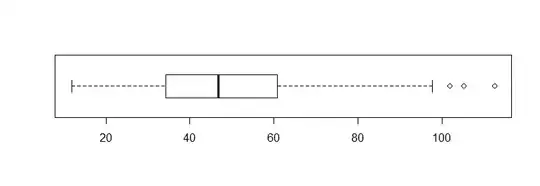I am looking to determine whether two slopes (linear model) are statistically significantly different (p-value) from one another. Inserted is a graph showing the data and below is a toy version of the data that I am working with:

Age<-as.data.frame(c(50,60,70,50,60,70))
Sex<-as.data.frame(c("Male","Male","Male","Female","Female","Female"))
Strength<-as.data.frame(c(50,40,30,45,35,25))
data<-cbind(Age,Sex,Strength)
colnames(data)<-c("Age","Sex","Strength")
To me it would seem that the dependent variable is Strength (continuous), which is determined by an interaction between Age (continuous) and Sex (categorical). In such a scenario, should I be using ANCOVA to test for a significant difference between the two slopes? Any thoughts would be appreciated. Thank you.